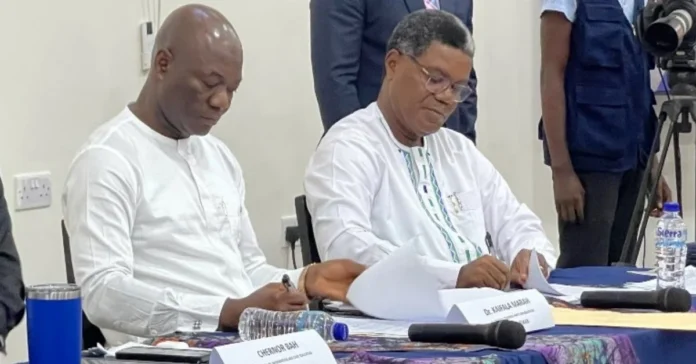By: Thaimu Bai Sesay
In the bustling streets of Sierra Leone’s capital, Freetown, the buzz of conversation often revolves around a significant event looming on the horizon: June 19th and the tripartite. From the market vendors to the political elite, there’s scarcely a day that passes without hearing these terms whispered or debated in hushed tones. Yet, amidst the fervor and speculation, there’s a cacophony of misconceptions swirling around this pivotal moment in Sierra Leonean politics.
As citizens, it’s natural to be concerned about national issues, but it’s equally vital to grasp these matters accurately to avoid forming misguided opinions. The tripartite, a central focus of current discourse, has been shrouded in ambiguity, with diverse interpretations and fears running rampant as the June 19th deadline approaches.
To cut through the fog of uncertainty, this article aims to provide clarity by delving into the essence of the tripartite based on the concrete documents signed by both the Government and the All People’s Congress Party. Rather than adding to the chorus of conflicting opinions, let’s address the misconceptions head-on and dispel the looming apprehensions surrounding June 19th.
Understanding the Tripartite: Resolution Three of the National Unity Agreement
At its core, the tripartite is one of the eight resolutions born out of the national unity agreement between the Government and the All People’s Congress Party. Specifically, it constitutes resolution three of this pivotal accord, tasked with a comprehensive examination of the systems, structures, and processes employed during the June 24, 2023, electoral cycle. This scrutiny is informed by past elections and aims to foster collaboration, verification, authentication, and the publication of electoral data adhering to international best practices. The goal? To bolster the credibility of all future elections in Sierra Leone, ensuring they are free, fair, and beyond reproach.
Navigating Misconceptions: Separating Fact from Fiction
Amidst the flurry of conjecture, it’s imperative to clarify certain misconceptions surrounding the tripartite. Firstly, the tripartite mandate is not to overturn elections akin to the powers held by the supreme court. Instead, it operates within the framework established by the national unity agreement, with its formation sanctioned by the President himself, not imposed by external entities.
Furthermore, as June 19th looms large on the horizon, it’s crucial to understand that this date marks the conclusion of the tripartite, not the initiation of upheaval as some may fear. It serves as the expected deadline for the publication of outcomes stemming from resolution three of the national unity agreement, providing transparency and insight into the deliberations of the cross-sectional committee.
Conclusion: Dispelling Fears, Fostering Understanding
In essence, the tripartite embodies a pivotal step towards fortifying Sierra Leone’s democratic foundations. By meticulously scrutinizing past electoral processes and implementing measures to enhance credibility, it seeks to pave the way for a future where elections are not marred by doubt or dispute.
As citizens and stakeholders, it’s incumbent upon us to embrace a nuanced understanding of the tripartite, rooted in factual analysis rather than conjecture. By doing so, we can dispel fears, foster dialogue, and chart a course towards a more robust and resilient democratic landscape in Sierra Leone.

